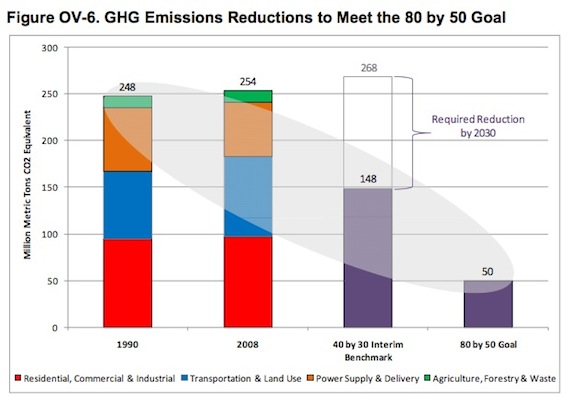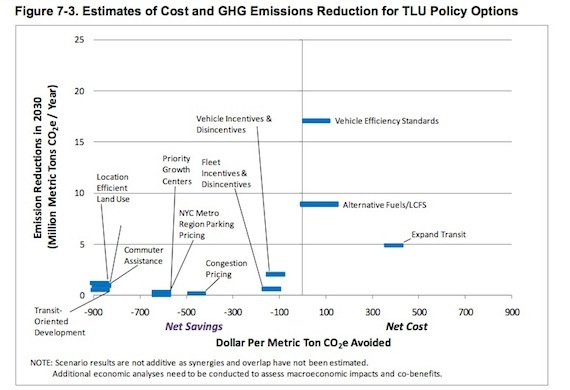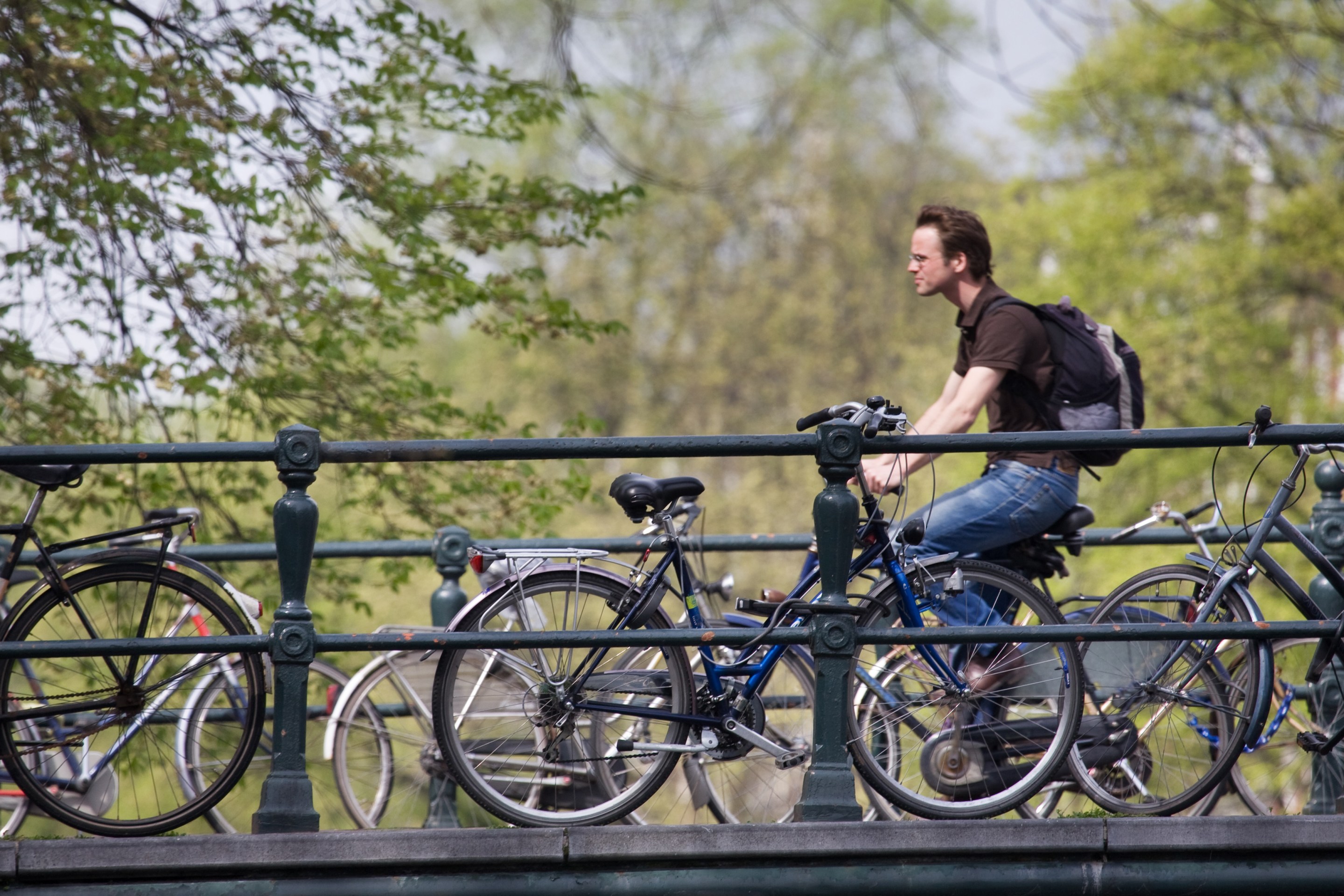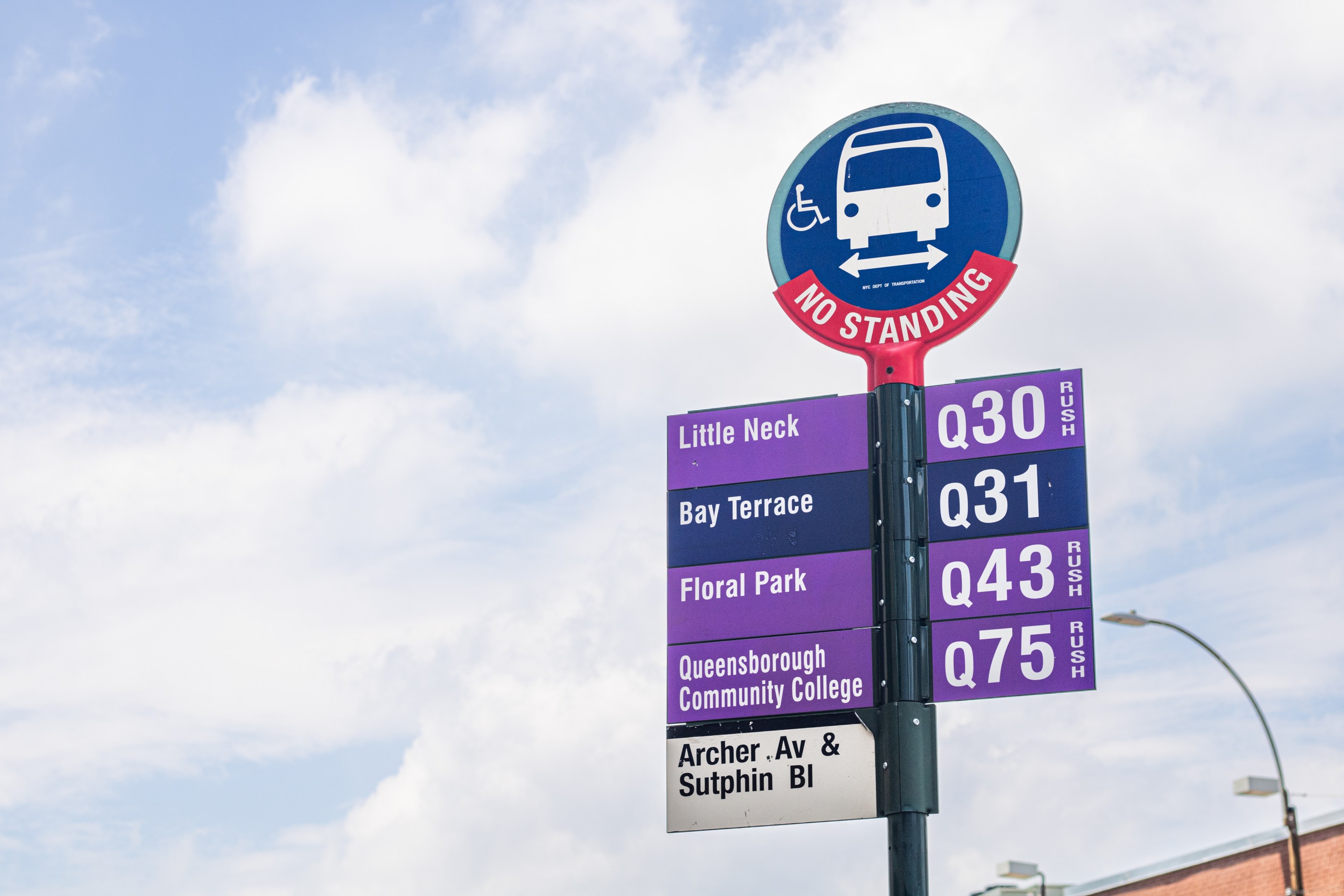
As Andrew Cuomo transitions into the governorship, David Paterson just handed him a parting gift: a comprehensive blueprint for how the state can tackle its greenhouse gas emissions. The plan, which has been in development since a Paterson executive order in August 2009, goes into spectacular detail about how the state might reach the ambitious goal of reducing greenhouse gas emissions to 80 percent below 1990 levels over the next forty years.
With Paterson exiting the stage soon, the plan carries little weight, but it shows what it would take for New York to tackle climate change with the urgency it deserves. While emissions from buildings are the largest contributor to climate change in New York, the team of experts who authored the report make clear that it will take an all-out transformation of the state's transportation and land use systems to reach the climate goal. Transit expansion, smart growth, complete streets, and congestion pricing (for New York City, at least) all figure into the plan.
The biggest transportation-related reduction in greenhouse gas emissions would come from a total shift to clean vehicles powered by clean fuels by 2035. Over the next 20 years, moving toward that goal could eliminate 130 million metric tons of CO2 equivalent, more than every other transportation and land use proposal combined.
The other big-ticket reduction in the transportation sector would come from a massive expansion of transit. That includes everything from bus rapid transit in every metro area in the state, to new subways and the roll-out of high-speed rail. All that new transit would cut greenhouse gas emissions by a large amount, though the report notes that it couldn't reduce driving very much in more rural parts of the state.
The transit expansion would cost an additional $25 billion over the next two decades, making it the most expensive transportation-related suggestion. "Achieving these goals would require funding well above what is available today," the authors write. Of course, the report, which is more scientific than political, doesn't specify where the funding for this transit expansion would come from.

Smart growth initiatives, without which the transportation emissions targets would be impossible, loom large in the plan. "Without significant changes in land use and development patterns in New York State, the level of VMT reductions and mode share changes contemplated in the entire suite of transportation and land use policies will be difficult to achieve," the report states. If New York keeps sprawling, we won't be able to build well-used transit systems, and increased driving will eat away at fuel efficiency gains.
The report offers two principal strategies to combat sprawl. First, the authors recommend the creation of "priority growth centers" where compact, mixed-use, walkable and bikeable development can flourish. These centers would exist in urban, suburban, and rural forms. Again, the goals here are extremely ambitious. The report calls for half of all new construction to take place in these priority growth centers by 2030 -- a tough bar to clear considering the state can provide smart growth incentives but can't directly regulate land use.
Even so, the plan emphasizes that smart growth initiatives need to be implemented as soon as possible, especially in fast-growing downstate areas. If action isn't taken quickly, all that new sprawl gets baked into the cake. "Land use patterns are difficult to change once established," says one understated passage.
Putting growth in the right parts of the state, however, doesn't get you across the finish line. You also need to take what the authors call "a micro-planning approach by creating specific, people-friendly/oriented network/land use connections." That means endorsing complete streets, for example. While more compact development makes it far easier to walk to the store, on a terribly designed street it might still be dangerous or unpleasant.
The plan also endorses two policies particularly important for the densest urban environments in the state: congestion pricing and parking reform.
Congestion pricing, the authors propose, should be instituted in New York City with the revenues going to pay for some of their other recommendations.
The plan also calls for a major revision of parking policy across the state. In the downtowns of all the state's major cities, smarter pricing of on-street parking could reduce a major incentive to drive. Off-street, employers can offer their workers the option of cashing out their parking benefits rather than only offering free parking. The authors suggest that "the true cost of parking should be reflected in municipal development policies and zoning ordinances."
Neither congestion pricing nor parking reform offers a large reduction in statewide emissions. In fact, they offer the two smallest reductions of any land use or transportation policy. However, a place like Manhattan already has the best transit and most compact development in the country. The most important policies are already in effect, essentially. Congestion pricing and parking reform would push it a step even further and allow the very green, very massive, very densely populated regional core to function more smoothly.
This climate plan doesn't have any sort of binding power or even an abstract commitment from the state to eventually follow its specific recommendations, though Paterson's executive order does promise to reach that 80 percent reduction somehow. Even so, it could serve as a blueprint for the new administration to follow as it tackles climate change and a yardstick against which to measure future environmental efforts.
For the fiscally conservative Cuomo, the report also makes clear that a number of these efforts will actually help the state's bottom line. In particular, by reducing the cost of new infrastructure, the smart growth initiatives save the state billions over time. If Cuomo wants a way to burnish his environmental reputation without compromising on fiscal discipline, there's no better place to start.





